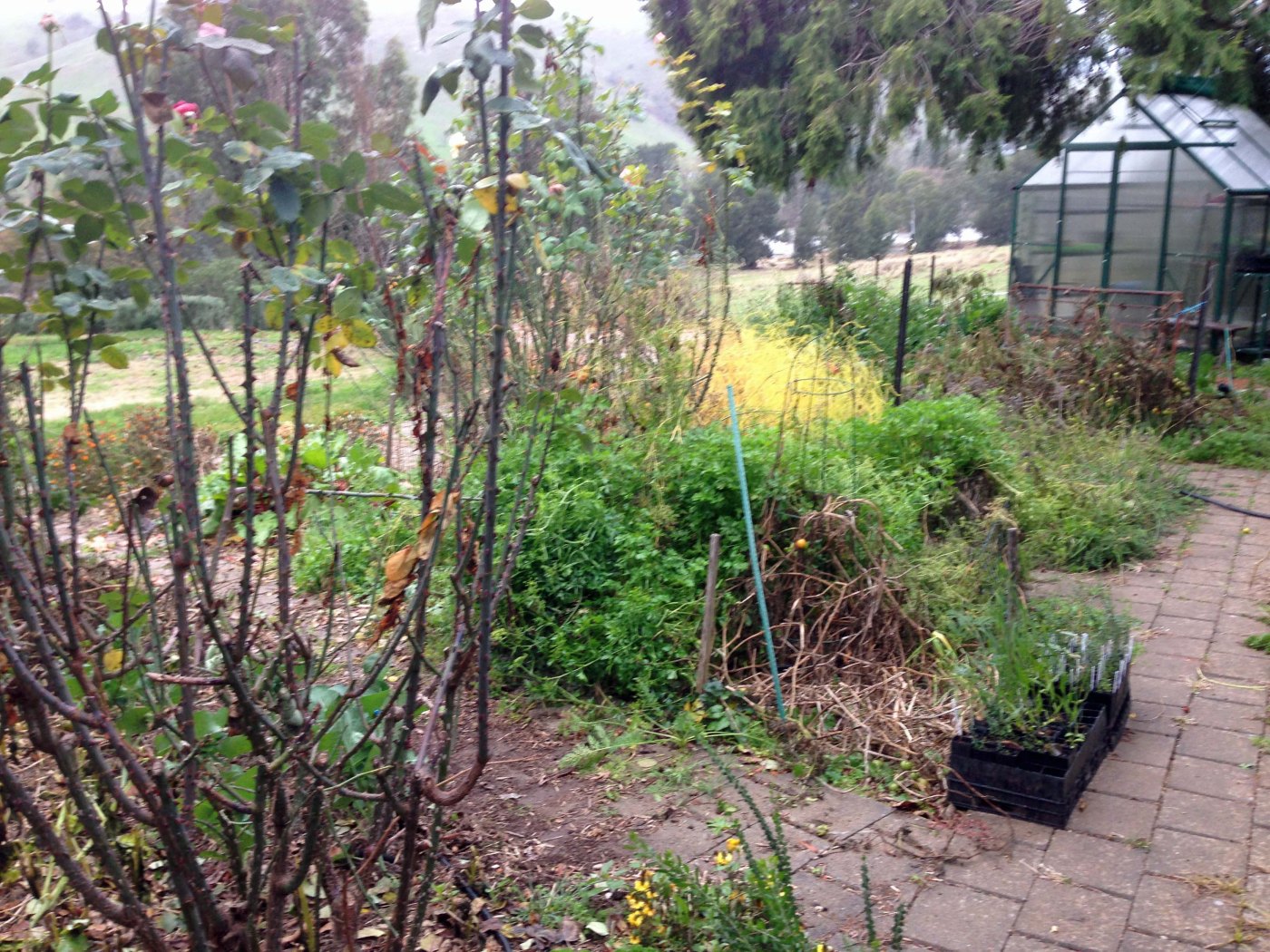The Big Wilt has finally come. Every year when the frosts arrive, the summer plants die back and make way for the ones that can take the cold.
This year we waited a long time for the changeover. In some ways it was a vindication of my messy, lazy style of vegetable gardening, the one where I keep sticking in new things, but don’t pull out the old ones until after they’ve gone to seed and died.
That leads to carrot seedlings squeezing up through the pavers and irritates Mum no end, but on the other hand we went on picking cherry tomatoes until well into June.
I gathered lots of green ones just before the frost and we’re still eating them. I also picked a few after the frost, but those ones tend to go mushy and rot very quickly.
I meant to turn the non-mushy cherry tomatoes into green chutney, but we already have such a supply of tomato passata and other things, that I’ve just been using them up gradually. In the meantime they’ve become red rather than green tomatoes anyway.
For the first time I have sweet potatoes. The vines growing outside collapsed in the cold, but left me a big bucket of nice tubers underneath. I still have a second tub of them growing inside my lovely new greenhouse, and they should be good to grow for another month.
In a normal year, I probably wouldn’t have got these unless I’d put glass over to protect them.
Meanwhile, the broccoli, leeks, rhubarb, snow peas, globe artichokes, carrots and bok choy are flourishing in the wreckage of the collapsed tomatoes, basil, chives, potatoes and eggplants.
In other parts of the garden, the natives seem much less affected. The banksia candles light up even the gloomiest day. 
And happily, my Illawarra Flame tree (brachychiton acerifolius) seems to be doing well in its first frosty winter. It was given to me by Dave Rowell along with some kurrajongs (brachychiton populneus) that have gone into paddock plantations, plus a bottle tree (brachychiton rupestris) and a lacebark (brachychiton discolor). Only the kurrajong is a local native. The others Dave grafted onto kurrajong rootstocks with the hope that it would make them less frost tender. While I’m not sure I follow the logic, so far, so good. 









Leave a comment